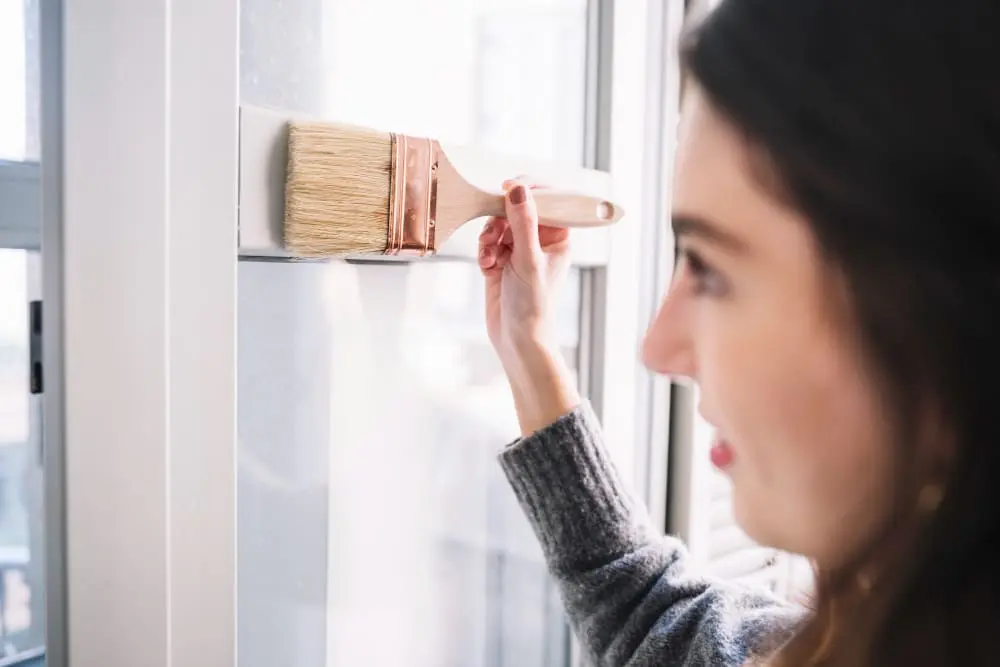Can You Paint Vinyl Siding? Yes, Here’s How & What to Know

Yes, you can paint vinyl siding — and it can last for 20 years or more with the right prep and materials. The secret it to paint with an acrylic paint, and make sure the surface is clean, dry and properly primed. When done well, coated vinyl will withstand fading, cracking and peeling for 5 to 10 years.
Vinyl siding painting is an affordable option for updating the look of your home’s exterior without the expense of a complete replacement. Opt for a color that is the same as, or a shade lighter than, the original color to prevent warping and always follow the manufacturer’s instructions. Used correctly, it can keep your siding looking clean and current for decades.
The Short Answer: Yes, You Can Paint Vinyl Siding!
Why Paint Vinyl Siding? (Pros and Cons)
Painting your vinyl siding is a good way to give your home a fresh look, but it is not without risks. It’s cheap and easy to make your own, but it needs to be prepared properly and has a downside when changing colors later on.
Benefits of Painting Vinyl Siding
Cost-Effective Home Transformation
Painting is also far more affordable than replacing siding and a visual improvement is obvious.
Enhanced Curb Appeal and Color Customization
You can refresh the look of your home with new, modern colors that reflect your style.
Extended Lifespan and Added Protection
A coat of paint protects siding from UV damage, moisture, and light wear, thus prolonging its lifespan.
Environmental Advantages (Less Waste)
Paint is an eco-friendly way to minimize landfill waste by using what’s already made.
Potential Drawbacks and Considerations
Risk of Warping (if done incorrectly)
Dark colors, and painting in the blazing sun also can cause the siding to overheat and buckle into all sorts of wonky shapes.
May Void Manufacturer’s Warranty
Most vinyl siding guarantees are invalidated if the surface is painted, and painted with unauthorized products or colors.
Ongoing Maintenance Requirements (compared to unpainted vinyl)
Painted siding might also need touch-up painting or repainting over the years to address fade, peeling, or weather-related damage
Not a Fix for Damaged Siding
You might be able to paint over cracks, holes, and other structural problems, but not repair them._DECREFAPainting won’t fix cracks, holes or structural problems — it only improves the appearance, not the function.
Choosing the Right Paint for Vinyl Siding
Look for “Vinyl-Safe” Acrylic Latex Paint
These paint types are designed to contract and expand with siding to avoid cracking or peeling.
Why Acrylic Urethane Resins are Key
They add adhesion and elasticity, which can help the paint adhere to vinyl better and withstand weathering.
Benefits of 100% Acrylic Formulas
They provide excellent durability, very good UV resistance, very good color retention – perfect for long-term exterior finishes.
Understanding Color Restrictions (Light Reflective Value – LRV)
Why Lighter Colors are Generally Safer
Lighter colour means more heat reflection, which lowers the chances of warping or buckling on vinyl siding.
When Darker “Vinyl-Safe” Colors Can Be Used
Dark “vinyl-safe” colors are engineered to have a premium exterior finish that resists the harmful effects of the sun.
Top Paint Brands and Product Recommendations
‘Sherwin-Williams VinylSafe®, Benjamin Moore Regal Select®, and Behr Premium Plus® are time-tested selections when it comes to vinyl-safe paints.
Step-by-Step Guide: How to Paint Vinyl Siding
1. Thorough Cleaning and Inspection
Removing Dirt, Mildew, and Chalkiness
To remove any buildup and help the paint adhere, use a siding cleaner or a solution of water, detergent, and bleach.
Using a Pressure Washer vs. Hand Scrubbing
Pressure washing is faster and more efficient, but hand scrubbing can be effective on small spaces or fine spots.
Inspecting for Damage and Making Repairs
Look for cracks, loose panels or holes and repair them before painting for a smooth, long lasting finish.
2. Preparation and Masking
Taping Off Windows, Doors, and Trim
You can protect edges and avoid accidentally splattering non-siding surfaces with paint using painter’s tape.
Covering Landscaping and Other Surfaces
Cover plants, patios, sidewalks and garden furniture with drop cloths or plastic sheeting to protect them from overspray and drips.
3. Priming (When Necessary)
When to Apply Primer (e.g., significant color change, faded siding)
You will need to use primer if you are painting heavily faded siding, or changing the color in a dramatic manner, to get as close to full coverage as possible.
Choosing a Vinyl-Compatible Primer
Choose a bonding primer that is appropriate for vinyl, so it sticks properly and provides a clean finish.
4. Applying the Paint
Best Application Methods (Sprayer vs. Roller vs. Brush)
A paint sprayer gives you the quickest, most consistent results. Roll flat areas; brush edges or trim.
Techniques for Even Coverage and Avoiding Drips
Paint with smooth, overlapping strokes. If spraying, keep a constant distance and do not oversaturate rollers or brushes.
Applying Multiple Thin Coats
Be sure to apply two thinner coats than one thick coat for better adhesion, drying and longer lasting protection.
Ideal Weather Conditions for Painting
Paint during mild dry conditions, around 50°F–85°F (10°C–29°C), with low humidity and no direct sunlight.
5. Curing and Final Touches
Proper Drying and Curing Times
Let each coat dry at least 4 hours. Pull curing for maximum strength may require 7 days.
Removing Tape and Cleaning Up
Carefully remove painter’s tape when the paint is dry to the touch. Clean tools and carry out coverings and other used material at once.
Maintaining Your Painted Vinyl Siding
Regular Cleaning Practices
Mop annually with mild soap and water, or using a pressure washer to eliminate dirt and help avoid mildew accumulation.
Touch-Ups and Repainting Frequency
Check for chipping or wearing every year. Touch-up as necessary and expect to repaint every 5–10 years, depending on exposure and paint quality.
Ready to Transform Your Home’s Exterior?
Give your siding a new look with a long-lasting, cost-saving update
Get a Free Consultation / Quote Today!
Call us now for a no obligation discussion about your project and great advice.
FAQs About Painting Vinyl Siding
How long does paint last on vinyl siding?
With good prep and paint, it can hold up for 5–10 years.
Is it cheaper to paint or replace vinyl siding?
Painting is much less expensive to replace when compared to brand new stone.
Can painting vinyl siding cause it to warp?
Yes, but dark or paint that is not vinyl safe is applied. Stick with light or vinyl-safe colors.
Do I need a professional to paint my vinyl siding?
Not necessarily. You can DIY with the right tools and prep, but pros guarantee efficiency and longevity.
Make An Appointment
Do You Need A Professional Painter? Fill Out This Form To Get In Touch.
Every day from
8:00 — 18:00
Call to ask any question
